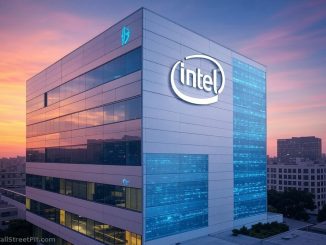Intel’s (NASDAQ: INTC) new CEO Pat Gelsinger on Thursday warned the global computer-chip supply crunch hammering multiple industries could stretch beyond 2022, The WSJ reported.
Gelsinger told analysts in a post-earnings call that the rising demand for semiconductors alongside limited manufacturing capacity has stressed supply chains.
“This will take a while until people can put more capacity in the ground…It’s just the way it is when you’re building new factories,” the report quoted Gelsinger as saying.
Fueled from a confluence of factors, including supply chain complexity, no lead capacity strategies, and soaring demand as a result of the pandemic, the chip supply shortage has sent semiconductor fabrication plants which manufacture chips powering anything from massive data-centers to modern autos and countless digital devices, to being pressured from all quarters to fill in the gaps.
While chip supply limitations are not a new phenomenon, in the age of COVID-19 with unexpected interruptions at multibillion-dollar chip factories, these limitations are effecting even the production of basic computer components made in older fabrication plants.
President Biden’s administration this month met with executives from the auto, tech and consumer electronics industries to address the ongoing chip shortage. After the meeting, the White House said the President, who in his $2 trillion infrastructure plan has already included a $50 billion package for the chip manufacturing industry, views the semiconductor chip supply shortage as a “top and immediate priority”.
Gelsinger, who attended the meeting virtually, told Reuters that his company wanted to start producing chips at Intel plants within 6-9 months to address the shortage. Still, during his co.’s post-earnings call Gelsinger told analysts that it will be a few years before the ecosystem will make significant investments to address the supply crunch.
Intel last month announced plans to vastly expand its advanced chip manufacturing capacity. The company said it plans to spend up to $20 billion to build two new factories in Arizona and open its factories to outside customers.
“The investment needed at the scale required is immense,” Gelsinger said.
It’s worth pointing out that Intel is the only U.S. chipmaker that fabricates its own chips in the U.S. The rest manufacture theirs by contracting with big companies, mostly in Taiwan or South Korea.
Intel Earnings
Intel reported 1Q/21 EPS of $1.39 vs $1.15 (adjusted) expected on Thursday, down 1% year-over-year (y/y). Non-GAAP revenue came in at $18.57 billion, beating street estimates of $17.90 billion. Revs were flat y/y.
Intel said it expects second quarter revenue to be $17.8 billion, slightly higher than street expectations of $17.55 billion. On the EPS metric, the company guided $1.05 a share. Analysts on average expected adjusted EPS of $1.09 a share. The lower EPS is attributed to Intel’s plans to building additional manufacturing capabilities.
Intel Stock
Intel shares traded lower by $1.46, or 2.33%, at $61.20 at press time in New York on Friday. Ticker closed $1.13 lower at $62.57 on Thursday.
- Bulenox: Get 45% to 91% OFF ... Use Discount Code: UNO
- Risk Our Money Not Yours | Get 50% to 90% OFF ... Use Discount Code: MMBVBKSM
Disclaimer: This page contains affiliate links. If you choose to make a purchase after clicking a link, we may receive a commission at no additional cost to you. Thank you for your support!



Leave a Reply